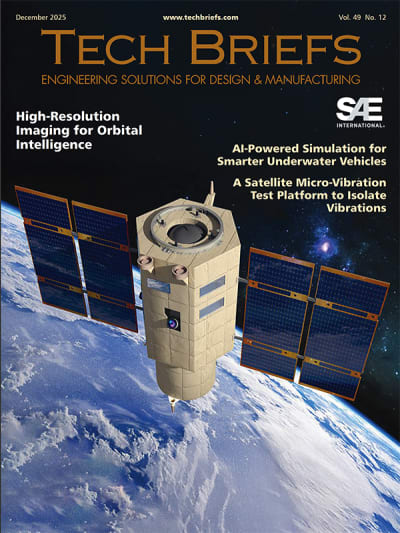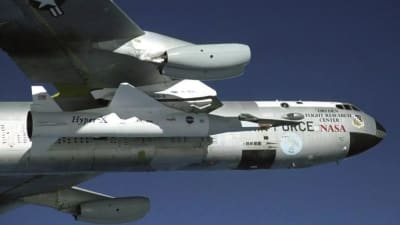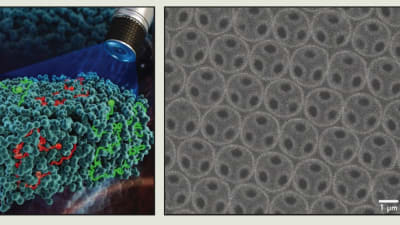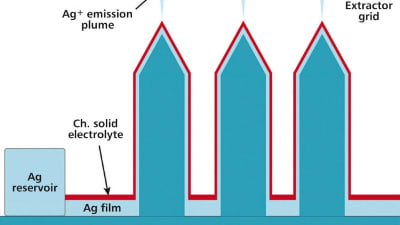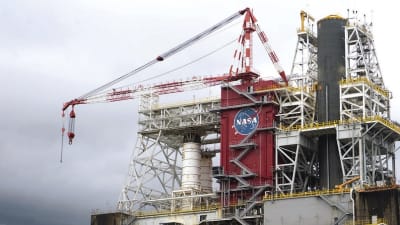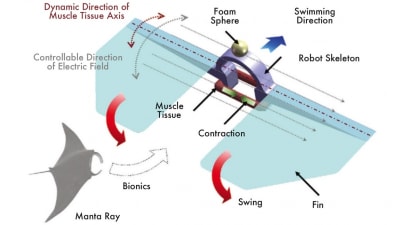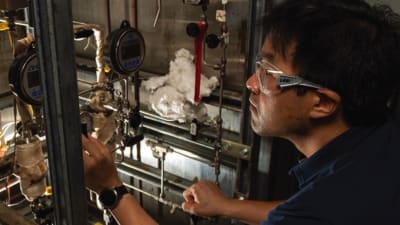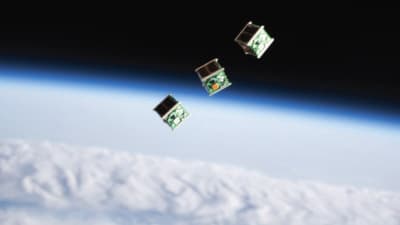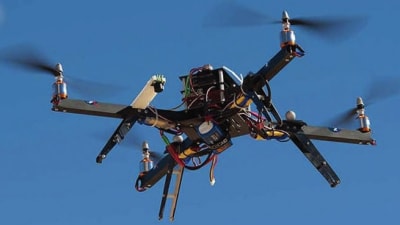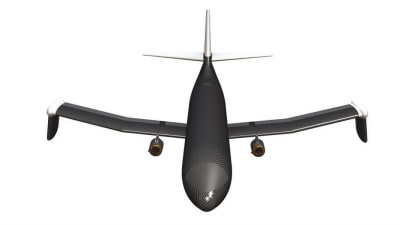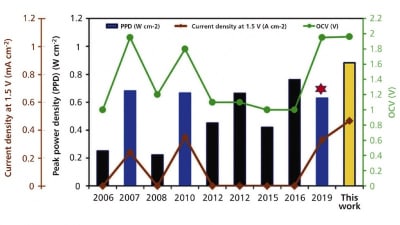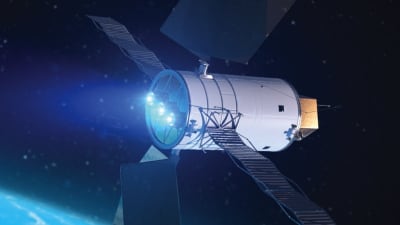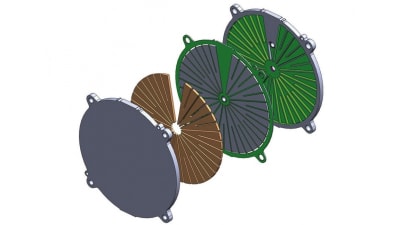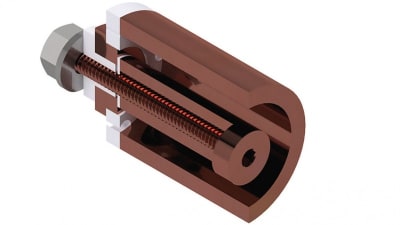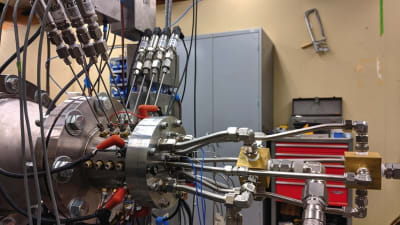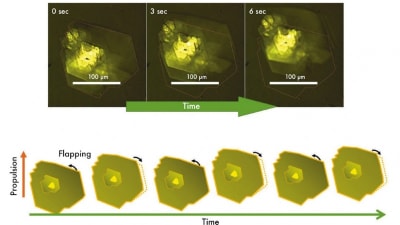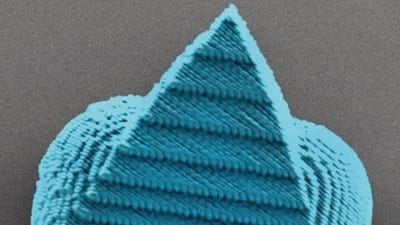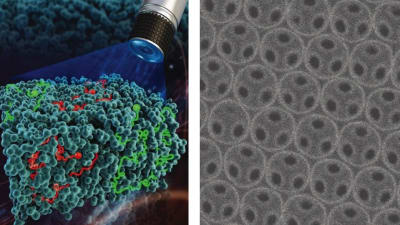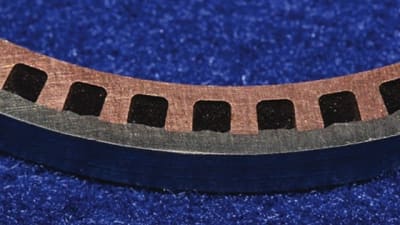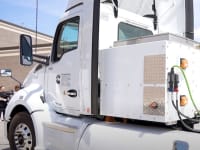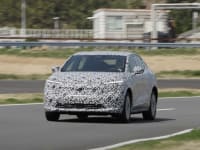73
61
169
-1
0
30
Briefs: Power
NASA researchers are eliminating complex joints by manufacturing a 1-piece TCA utilizing 3D printing and large-scale additive manufacturing technologies to directly deposit the nozzle onto the combustion chamber. And, by replacing a traditional solid metal jacket with a composite overwrap for support, the overall weight is reduced by over 40 percent. Read on to learn more.
Briefs: Robotics, Automation & Control
Researchers have developed a compact and versatile robot that can maneuver through tight spaces and transport payloads much heavier than itself. Smaller than a credit card and weighing 6 grams, the nimble swimming robot is ideal for environments with limited space like rice fields, or for performing inspections in waterborne machines. Read on to learn more.
Briefs: Motion Control
In a recent study published in the journal eLife, an international research group has studied the relationship between electrical stimulation in stick insects’ leg muscles and the resultant torque (the twisting force that makes the leg move). Read on to learn what they found.
Briefs: Propulsion
University of Virginia researchers showed for the first time that airflow in supersonic combusting jet engines can be controlled by an optical sensor. The finding could lead to more efficient stabilization of hypersonic jet aircraft. Read on to learn more.
Briefs: Power
A novel micropropulsion system was developed for nanosatellite applications using a liquid-fed pulsed-plasma thruster. It uses a liquid propellant for a Lorentz-force pulsed-plasma accelerator and an extended lifetime ignition system driven by nanosecond-long pulses. Read on to learn more.
Briefs: Photonics/Optics
The “nanoswimmers” could be used to remediate contaminated soil, improve water filtration, or even deliver drugs to targeted areas of the body.
Briefs: Power
A Sustainable Engine with Reduced Assembly Costs
Boom Supersonic, the company building supersonic planes, is developing Symphony, a new propulsion system designed and optimized for its Overture supersonic airliner.
Briefs: Power
A team of MIT engineers is creating a one-megawatt motor that could be a key stepping-stone toward electrifying larger aircraft. The team has designed and tested the major components of the motor.
Briefs: Design
Biomimicking Hummingbirds for Better Drones
Hummingbirds have extreme aerial agility and flight forms, which is why many drones and other aerial vehicles are designed to mimic hummingbird movement.
Briefs: Manned Systems
Researchers at NASA's Jet Propulsion Laboratory are developing a novel microthruster that could provide easy-to-control propulsion during spaceflight.
Briefs: Mechanical & Fluid Systems
This below-the-hook device enables gentle crane placement to decrease the risk of property damage.
Briefs: Motion Control
Biomimetics is one of the most important robotic research methods which can improve the kinematic performance of robots by imitating the structure and behavior of natural organisms.
Briefs: Propulsion
An experimental plant-based jet fuel could increase engine performance and efficiency, while dispensing with aromatics, the pollution-causing compounds found in conventional fuels.
Briefs: Aerospace
Besides miniature spacecraft propulsion systems, the valve could also have applications in the industrial processing industry where low flow devices are commonly used.
Briefs: Mechanical & Fluid Systems
Single joint allows six attachments with independent movement.
Briefs: Aerospace
Acoustic optimization for anti-phase asymmetric rotor.
Briefs: Electronics & Computers
Advanced analyses shed light on the mechanism of a deadly problem plaguing combustion chambers in rocket engines.
Briefs: Motion Control
A lightweight alternative to rudders for aircraft with spanwise adaptive wings.
Briefs: Power
Electrification of the transportation sector is critical to future energy and environmental resilience and will require high-power fuel cells (either standalone or in conjunction with batteries) to...
Briefs: Energy
This scalable power processing unit (PPU) is for use with low-power Hall effect thrusters.
Briefs: Mechanical & Fluid Systems
A new catalyst and microchannel reactors improve efficiency and cost of the process.
Briefs: Energy
The system could allow for flight speeds of Mach 6 to 17 and would have applications in air and space travel.
Briefs: Electronics & Computers
This system would extend the life of CubeSat satellites.
Briefs: Imaging
The engine could make rockets not only more fuel-efficient, but also more lightweight and less complicated to construct.
Briefs: Motion Control
Synthesized micro-robots can convert their mechanical motion into a means of self-propulsion in water.
Briefs: Propulsion
A remotely controlled microswimmer could navigate the human body and aid in drug delivery.
Briefs: Propulsion
The “nanoswimmers” could be used to remediate contaminated soil, improve water filtration, or even deliver drugs to targeted areas of the body.
Briefs: Automotive
The low-density, graphene-based aerogel could make aircraft as quiet as a hairdryer.
Briefs: Propulsion
This method is a faster way to manufacture combustion chambers and nozzles for aerospace propulsion as well as heat exchangers in oil and gas applications.
Top Stories
Blog: Manufacturing & Prototyping
2025 Holiday Gift Guide for Engineers: Tech, Tools, and Gadgets
INSIDER: Energy
Scientists Create Superconducting Semiconductor Material
Blog: Design
Blog: Green Design & Manufacturing
This Paint Can Cool Buildings Without Energy Input
Quiz: Automotive
Blog: Manufacturing & Prototyping
Webcasts
 Upcoming Webinars: Manufacturing & Prototyping
Upcoming Webinars: Manufacturing & Prototyping
The Real Impact of AR and AI in the Industrial Equipment Industry
 Upcoming Webinars: Motion Control
Upcoming Webinars: Motion Control
Next-Generation Linear and Rotary Stages: When Ultra Precision...
 Podcasts: Energy
Podcasts: Energy
SAE Automotive Podcast: Solid-State Batteries
 Podcasts: Medical
Podcasts: Medical
How Wearables Are Enhancing Smart Drug Delivery
 Podcasts: Manufacturing & Prototyping
Podcasts: Manufacturing & Prototyping
SAE Automotive Engineering Podcast: Additive Manufacturing
 Podcasts: Aerospace
Podcasts: Aerospace
A New Approach to Manufacturing Machine Connectivity for the Air Force
